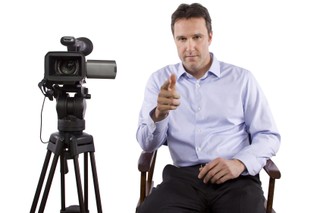How to Nail an On-Camera Audition
If you’ve been taking acting classes for a while, you’re probably itching to start to audition for TV, films and commercials. After all, with so many TV shows being filmed in Chicago these days, local actors have a great shot of landing a part, as long as they know how to approach an on-camera audition.
If you’ve only auditioned for theater parts before, know that on-camera auditions are significantly different from theater auditions, and you need to adjust your delivery accordingly.
To help you out, we spoke with Ryan Kitley, who offers private, one-on-one on-camera audition coaching sessions as well as group on-camera classes in Chicago, to give you his top tips for nailing an on-camera audition.
- Make Your Performance Smaller
Unlike in the theater, where you have to learn how to project your voice and be larger than life, in on-camera auditions you need to talk much more softly and reign your performance in.“I always tell my clients to just know that the camera and the mic will come to you,” Kitley says. “Picture the camera being a really cool guy at a party who is in the corner of the room and watching you. Actors should work to mirror this cool guy. Keep your thoughts big and your movements small and specific. There is power in stillness, especially on camera. - Know Your Subtext
Kitley says in an on-camera audition, whatever is going on in your head will show up on your face, so he says understanding why your character is doing what he is doing is so important to having a great audition. “That leads to really subtle work,” Kitley says. “You’ve got to have strong thoughts, strong subtext, and strong intention.” - Start the Scene Before They Press Record
Even actors who have tons of stage experience tend to get nervous when a camera is in front of them. That’s why Kitley says the best thing you can do is to pretend as if your scene has already started even before they start recording. Kitley suggests trying to inhabit your character by making a physical movement that the character would do. For example, recently one of his clients was auditioning to be a mechanic, so he rubbed his hands as if to get the grease off of them before he started his lines. “Give yourself some kind of behavior so you area already involved in the scene,” he says. - Keep Your Environment Near the Camera
When you’re reading your lines, try to imagine that everything happening in your world is close to the camera. “You don’t want to place any of your environment outside of the 45 degree angle between you and the camera,” Kitley explains. When there are multiple characters in a scene, Kitley recommends picking points in the room, such as a piece of artwork or a doorknob, to look at as placeholders for the other actors, but remember to keep those points close to where the camera is. - Be Off Book
Having your lines memorized will always give you an edge in an audition, but it’s fine to keep your sides in your hand during the reading. If you need to refer to your sides, make sure to stay connected to your reader and the environment as much as possible. “In other words,” Kitley says, “work to pull the words off the page as part of your scene and not as an actor reading lines.” - Less Is More
Remember, if you’re a beginning actor, most of the parts you’re going to be auditioning for, especially here in Chicago, will be for short, co-starring spots, such as Cop #2, EMT, and Man on Bus. These type of characters are functionary roles that help support the story and the series regulars, so you don’t have to overact your part. “You must look the part and be talented enough to know to keep your one to two lines very subtle, simple, and honest,” Kitley says. “Don’t try to make the scene more than it needs to be.”And, he says, as you start to book more and more co-starring roles, you may be considered for the larger guest starring roles and even series regulars.Find out more about Ryan Kitley and his coaching at www.ryankitley.com.
